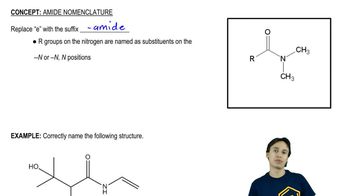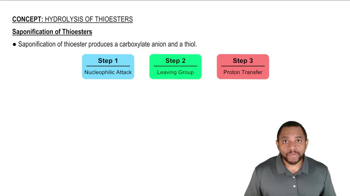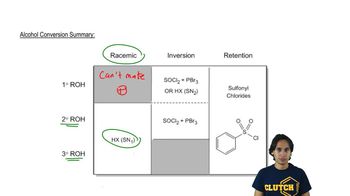Here are the essential concepts you must grasp in order to answer the question correctly.
Amide Bond
An amide bond is a functional group characterized by a carbonyl group (C=O) directly attached to a nitrogen atom (N). It is formed through a reaction between a carboxylic acid and an amine, resulting in the release of water. Understanding the structure and reactivity of amide bonds is crucial for predicting their behavior in chemical reactions, such as hydrolysis.
Recommended video:
Hydrolysis
Hydrolysis is a chemical reaction involving the breakdown of a compound by water. In the context of amides, hydrolysis typically results in the formation of a carboxylic acid and an amine. This reaction can be catalyzed by acids or bases and is essential for understanding the conversion processes in organic chemistry, including the transformation of temozolomide.
Recommended video:
Hydrolysis of Thioesters Concept 2
Temozolomide Conversion
Temozolomide is an alkylating agent used in cancer treatment, which undergoes conversion to methyldiazonium through a series of chemical reactions. The initial step involves the hydrolysis of an amide bond, leading to the formation of reactive intermediates. Understanding this conversion is vital for grasping the drug's mechanism of action and its therapeutic implications.
Recommended video:
Comparing and contrasting the Alcohol Conversions.
 Verified step by step guidance
Verified step by step guidance Verified video answer for a similar problem:
Verified video answer for a similar problem:



 0:43m
0:43m